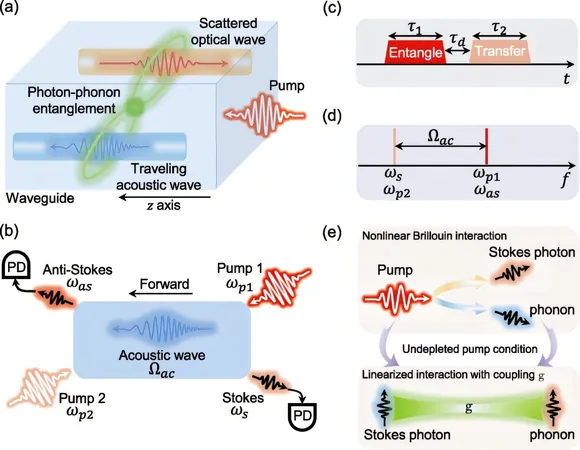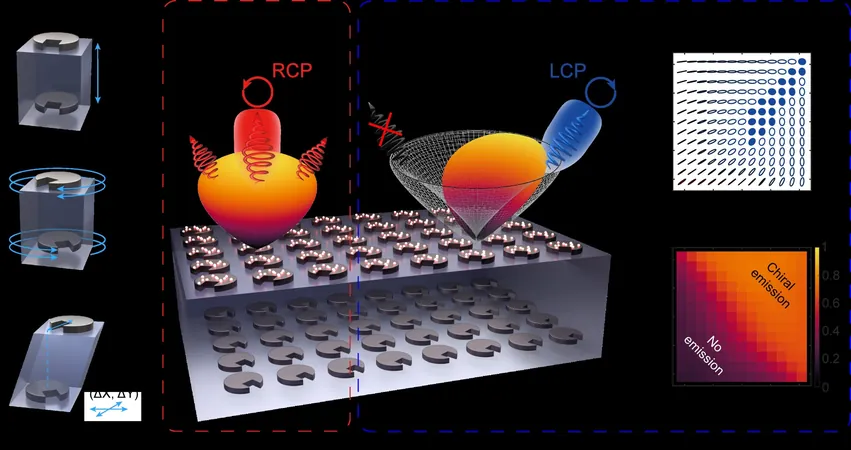
Revolutionary Breakthrough in Quantum Entanglement: Scientists Entangle Light and Sound!
2024-11-14
Author: Emma
Revolutionary Breakthrough in Quantum Entanglement: Scientists Entangle Light and Sound!
In a groundbreaking development for quantum technology, researchers at the Max-Planck Institute for the Science of Light (MPL) have unveiled a highly efficient method for entangling photons—the fundamental particles of light—with acoustic phonons, the quantum of sound. This advancement has far-reaching implications for secure quantum communications and quantum computing, as quantum entanglement is pivotal for these technologies.
Published in the prestigious journal *Physical Review Letters*, the study showcases a novel approach that not only achieves this complex entanglement but also ensures resilience against external noise, a common obstacle that has hindered the progress of quantum technologies until now.
Quantum entanglement is often described as a "spooky action at a distance," a term coined by physicist Albert Einstein. It refers to a unique phenomenon where particles become linked in such a way that the state of one instantly influences the state of another, regardless of the distance that separates them. This remarkable property could revolutionize secure communication methods and enhance quantum computing capabilities.
Typically, researchers have focused on entangling particles that share similar properties. However, the MPL scientists tackled the challenge of connecting disparate entities—specifically, sound waves and light. Their innovative optoacoustic entanglement scheme utilizes Brillouin scattering, a phenomenon that enables the coupling of quanta across vastly different energy scales. This technique not only demonstrates exceptional robustness but is also designed to integrate seamlessly into large-scale quantum signal processing systems while remaining effective at high temperatures.
As quantum technology progresses, the volatility of photons poses challenges for applications requiring stability, such as quantum memory and quantum repeater systems. The acoustic domain, where sound waves can be harnessed for quantum storage, now presents a compelling alternative. In this latest study, researchers reveal that while photons travel at the speed of light, the phonons move at a more measured pace, allowing for effective interaction and entanglement.
The potential applications of this discovery are immense. From enhancing the security of data transmissions to boosting the efficacy of quantum computers, the ability to entangle light with sound could lead to significant advances in how we process and transmit information in the quantum realm. This breakthrough not only enriches our understanding of quantum mechanics but paves the way for a future where quantum technologies become an integral part of everyday life.
Stay tuned for more exciting developments in the world of quantum physics and technology!









 Brasil (PT)
Brasil (PT)
 Canada (EN)
Canada (EN)
 Chile (ES)
Chile (ES)
 España (ES)
España (ES)
 France (FR)
France (FR)
 Hong Kong (EN)
Hong Kong (EN)
 Italia (IT)
Italia (IT)
 日本 (JA)
日本 (JA)
 Magyarország (HU)
Magyarország (HU)
 Norge (NO)
Norge (NO)
 Polska (PL)
Polska (PL)
 Schweiz (DE)
Schweiz (DE)
 Singapore (EN)
Singapore (EN)
 Sverige (SV)
Sverige (SV)
 Suomi (FI)
Suomi (FI)
 Türkiye (TR)
Türkiye (TR)